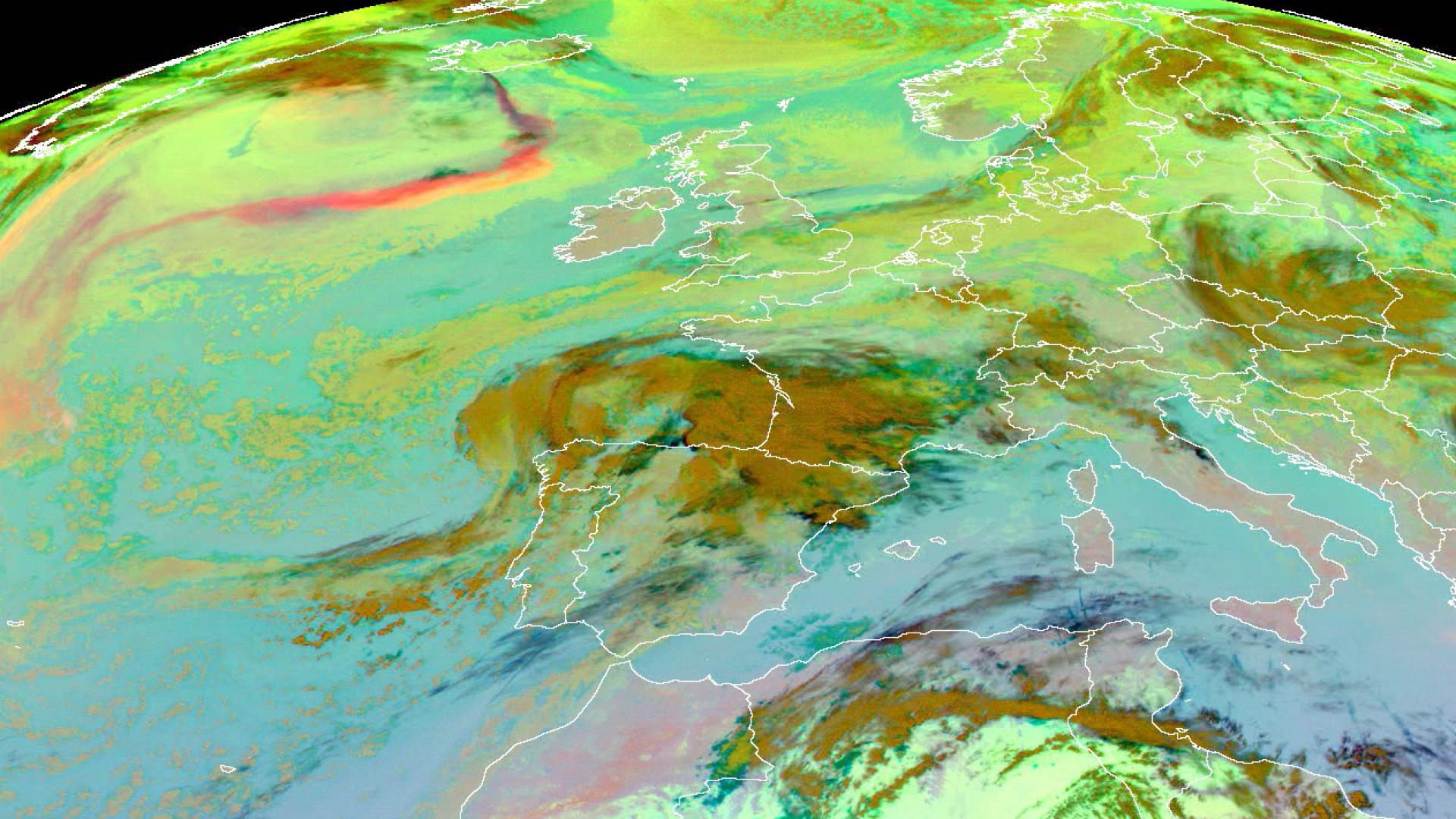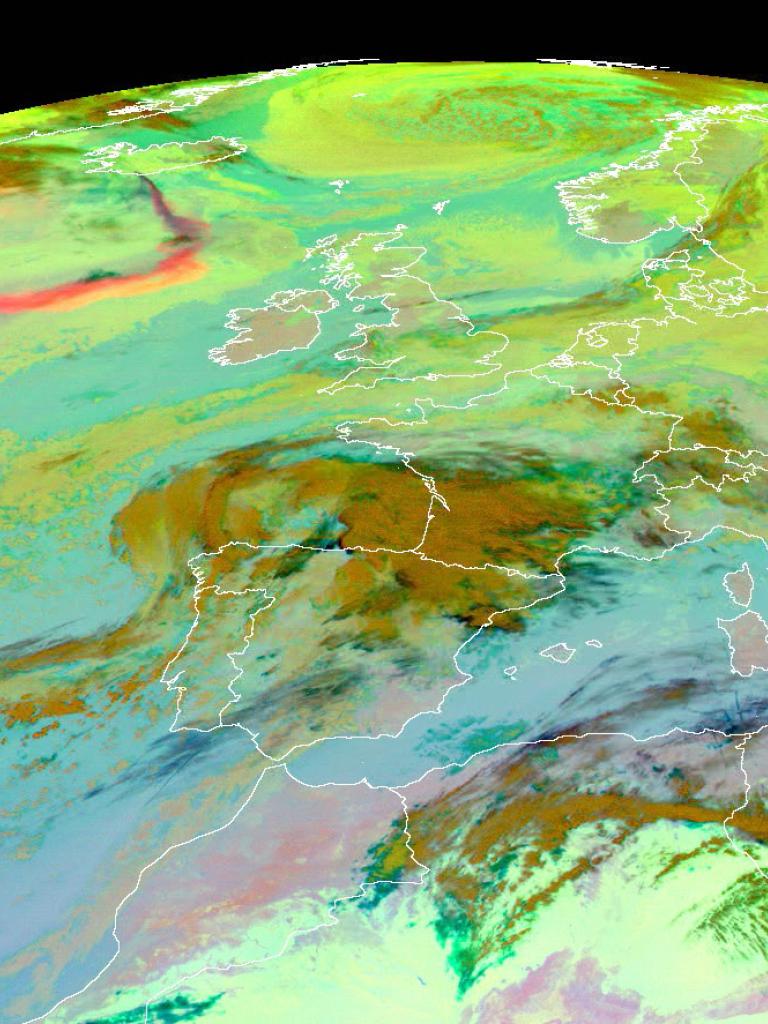
MTG satellites crucial for future volcanic ash observations


Following the recent eruption of Iceland’s Eyjafjälla volcano that spewed huge amounts of ash and grounded numerous flights across Europe, more than 50 experts from around the world came together at a workshop hosted by ESA and EUMETSAT to take stock of what has been learned and to identify future opportunities for volcanic ash detection, monitoring and prediction.
05 November 2024
28 May 2010
Following the recent eruption of Iceland’s Eyjafjälla volcano that spewed huge amounts of ash and grounded numerous flights across Europe, more than 50 experts from around the world came together at a workshop hosted by ESA and EUMETSAT to take stock of what has been learned and to identify future opportunities for volcanic ash detection, monitoring and prediction.
“I think the workshop has assembled the best expertise there is on ash-cloud monitoring and modelling. It is a very impressive meeting because it really gives all of us the latest knowledge and capabilities that exist around the world,” said Jean-Paul Malingreau, Head of Unit Work Programme and Strategy of the Joint Research Centre of the European Commission.
The participants of the workshop comprised of wide range of experts including ground-based and remote sensing specialists and modellers as well as representatives from the Volcanic Ash Advisory Centres (VAACs). While scientists and researchers shared information about the unique eruption, monitoring capabilities, modelling and validation techniques, the use of these data and models and the role of the VAACs were also presented.
Fred Prata, Senior Scientist for Atmosphere and Climate Change at the Norwegian Institute for Air Research, said: “Satellite data are extremely important for volcanic eruptions because these events can occur anywhere at any time, so you need a measurement system that can see the entire globe, all of the time.”
“We currently have geostationary and polar-orbiting satellites in orbit that provide information every 15 minutes and almost every hour, respectively. One of the missing parts of the story, however, is the vertical resolution. Lidars [like radar except it uses light instead of microwaves], in space can provide this, and ESA will launch a couple of Lidar missions in the future, including ADM-Aeolus.”
The crucial role of infrared instruments was emphasised in several talks for future volcanic-ash monitoring.
“I think the workshop has assembled the best expertise there is on ash-cloud monitoring and modelling. It is a very impressive meeting because it really gives all of us the latest knowledge and capabilities that exist around the world”
“Infrared instruments are absolutely vital for a couple of reasons. Firstly, infrared does not require sunlight so we can see volcanic emissions equally well day or night. Secondly, and perhaps most importantly, the infrared radiation that we use is in a band between eight and twelve micrometers, and it turns out that the particles that cause problems for aviation are micron size so they look in just the right wavelength region,” Prata said.
The importance of continued observations from geostationary orbit, as well as the use of observations from infrared and ultraviolet/visible sounding instruments, was emphasised in several presentations. EUMETSAT’s Meteosat Third Generation (MTG) satellites , to be developed by ESA, will carry infrared sensors. They will therefore be essential for monitoring volcanic ash in the future. In addition to improved imagery at 10-minute repeat cycles, the provision of data from the MTG infrared and ultraviolet/visible sounding missions will be crucial for the derivation of quantitative products for volcanic ash modelling.
The presentations on ground-based observations and modelling showed very good consistency, also with satellite observations, and it was well recognised that for the best results all data and information needs to be combined.
“There has been an unprecedented amount of ground-truth data collected by the European community on this ash cloud, and this is a great opportunity to learn more about the processes,” said David Schneider, Research Geophysicist at the US Geological Survey, Alaska Volcano Observatory. “Ground and aircraft measurements can also be used to compare to satellite data to help you understand whether what you are gathering is accurate.”
Philippe Husson, Aviation Weather Forecast Deputy and the Toulouse VAAC Manager for Meteo France, explained that requirements on observations of the volcanic ash evolved during the eruption to include numbers and expressed how this will impact his job and his needs from satellite missions.
“In the past, we used qualitative results to depict hazards, but now that we have been provided with figures on the threshold we will probably be required to provide concentration maps with absolute numbers to aviation users. As we must go from qualitative to quantitative information about ash concentrations and the distribution and size of particles, we need satellites to provide numbers,” he said.
Husson explained that the threshold figures are not definitive and are now being reassessed by aviation authorities as the decision was made very quickly during the crisis. Several factors will have to be taken into consideration, such as the results of trials with real ash in real engines, the types of engine used and the rate of ingestion, as flying 10 minutes in high concentration could be equivalent to flying six hours in weak concentrations.
“As the decision was taken quickly, there was not a lot of input from scientists, but now there is time to go to scientists and ask them what confidence we can have in these numbers,” he added.
Schneider, who works during eruption crisis episodes in Alaska to provide information about the location of ash clouds and to help set up warnings for the North Pacific, emphasised the fact that the satellite sensors monitoring ash clouds were not designed for this purpose but rather for meteorological, climate or pollution studies.
“These sensors work great, but maybe this eruption will help push the notion that there are no remote volcanoes. Just because you can’t see it, doesn’t mean the effects are out of reach,” Schneider said.
The EC’s Malingreau said: “We need to assess whether the instruments available now and in the near future are sufficient, so there will be some recommendations maybe for adjusting some of the future instruments to be sure they are ready to do the job. These can be made available to policymakers to decide what to finance.”
The capabilities of future satellite missions already planned now, like the Global Monitoring for Environment and Security (GMES) Sentinel-3, -4 and -5 and ESA Earth Explorer Lidar missions, like ADM-Aeolus and Earthcare, were highlighted. The crucial role of MTG as a provider of space-based observations in the future for volcanic ash monitoring was emphasised in several talks. The improved capabilities of the imagery mission will provide further details on the extent of the ash plume, whereas the capabilities of the MTG sounding mission will be essential for the derivation of quantitative products with additional information on the composition and density of the ash cloud.
A set of recommendations outlined at the workshop will be documented in a joint ESA-EUMETSAT publication and will be made available online. In the meantime, you can view an example of a modified current generation Ash product, first shown at the workshop, on our YouTube channel .
